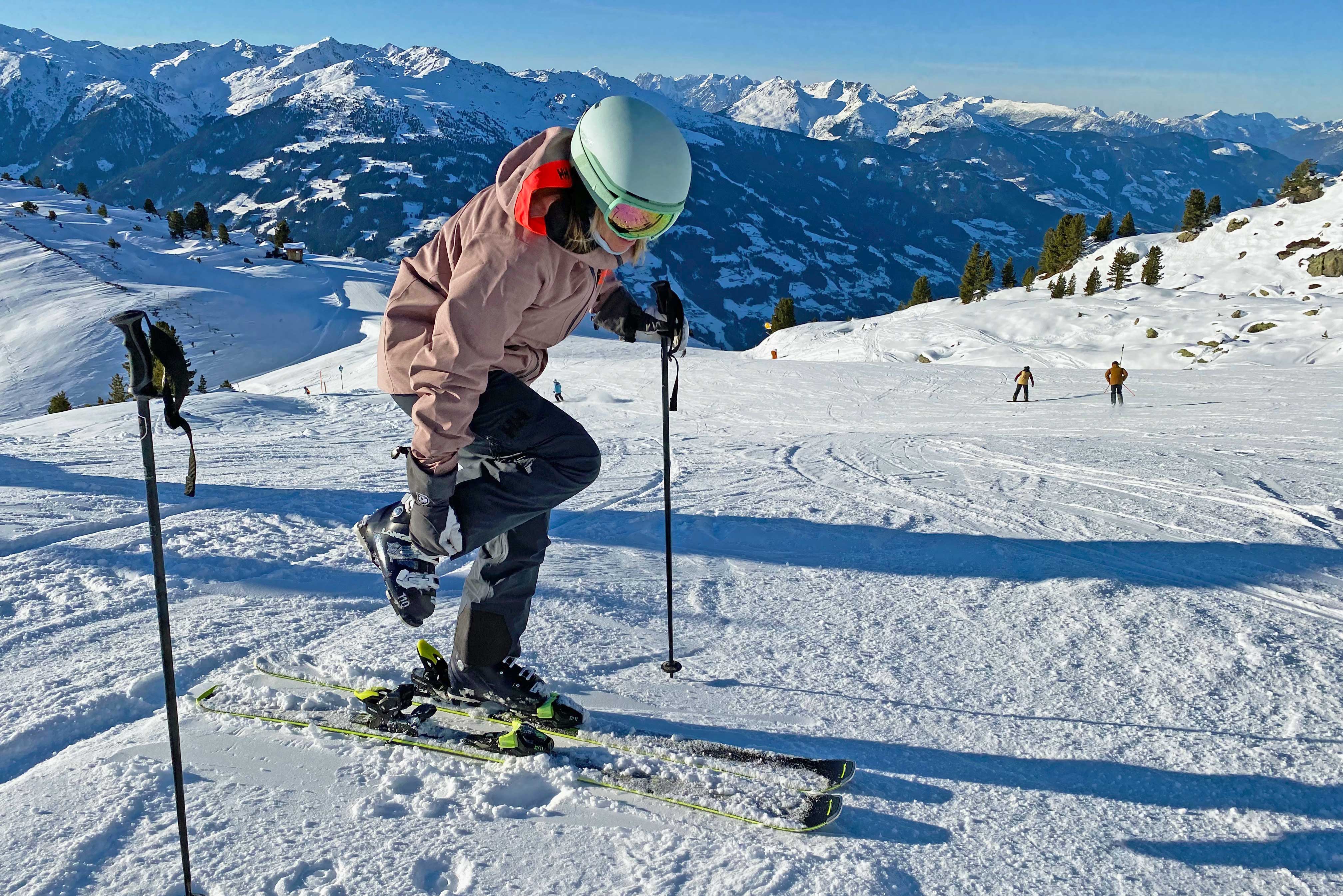

We've all skied on artificial snow - most notably at the end of the season when only a ribbon of white winds its way down through green pastures as the cows graze! But what exactly is the difference between artificial snow and natural snow? How harmful is artificial snow with regards to the environment? And which snow is better for skiing? We'll answer all this and more in our article!
Artificial snow vs. natural snow: the difference
Artificial snow and natural snow crystals have a completely different form. Natural snow crystals are delicate and pointy, which is what makes them stick together and form snowflakes. Natural snow falls from a great height, which gives time for the crystals to drift together and create large, fluffy snowflakes with air between the crystals. In contrast, to make artificial snow, water droplets are pushed through a snow cannon at high speed and sprayed out the other end. The resulting crystals are round instead of pointy, and the snow is somewhat denser because it doesn't trap as much air between the crystals.

Which snow is better for skiing on?
Both types of snow are fine for skiing. Artificial snow contains more water, which makes it go icier quicker but also makes it more resistant to rain. If you like going fast, then artificial snow is better. On the other hand, powder lovers will say there is nothing like natural snow. Even when it's not in powder form, natural snow is lighter and drier and won't turn into slush as easily.
Are there any limitations to making artificial snow?
Every skier and snowboarder hangs on the weather forecast each autumn, hoping for a few good early snowfalls to get the season off on a good foot. When snow isn't forthcoming, we at least hope that it will be cold enough to produce artificial snow (which incidentally makes a pretty good sticky base for natural snowfalls later on). To produce artificial snow, in most cases, temperatures must be below freezing, ideally for at least a few days. Low humidity is also helpful.
What is artificial snow made of?
Like natural snow, artificial snow consists entirely of frozen water. Chemicals or other artificial additives are prohibited in Austria, Italy and France. In Switzerland, bacteria are sometimes added so that snow can be produced at temperatures above zero. However, this method is controversial because of its environmental impact.

What lasts longer, artificial or natural snow?
Due to its low density, natural snow doesn't retain cold as well, and it melts faster than we powder lovers would like! Artificial snow is a lot more compact, which shields it better against rising temperatures. Unfortunately, we haven't yet figured out a way to produce fine powder snow with a snow cannon, and we don't know how to counteract the high density of artificial snow. If you want to ski powder you'll have to keep a close eye on the snow forecast!
Is artificial snow bad for the environment?
Producing artificial snow requires massive amounts of elecricity and water - about 10 litres per second! When we judge the impact of artificial snow on the environment, we have to take into account where the electricity and water come from. If it means diverting rivers and emptying lakes, then it obviously has an effect on local wildlife and terrain and can cause droughts. Some ski resorts try to source their water responsibly and use solar panels or windmills to generate electricity, whch can help mitigate the effect on the enivronment.
Creating artificial snow also requires setting up infrastructure such as water reservoirs and pipes, which have their own impact on the mountain scenery and can even lead to erosion. And then there's the mere presence of the snow itself - when it lasts too long into the spring, sensitive mountain plants have less time to blossom, which can endanger them.
Benefits of artificial snow, then?
In light of the changing climate, it's no longer a given that our ski resorts will be ready for business from November through May. But thanks to artificial snow, we can keep the lifts running even when Mother Nature isn't up to the task. And the higher density of artificial snow also ensures that the snow cover sticks around for longer. Indeed, a base coat of artificial snow can work wonders for preventing stones and grass from poking through. But sadly, more and more, even in high season we can hardly live without snow cannons.
Conclusion: no ski holidays without artificial snow?
Snow cannons have become common sights in most ski resorts in the Alps, thanks to the worsening effects of climate change. Early-season skiing in November, December and January is an important period for ski resorts, who rely on a fairly short ski season, and if their slopes don't have guaranteed snow then many feel that they have no choice but to turn to artificial snow. This is particularly true in lower-altitude ski areas. It's what keeps the ski resorts up and running and gives skiers and snowboarders the confidence to book their winter sports holidays at the end of the summer.

Interesting facts about artificial snow
- The cost of equipping 1km of piste with artificial snow cannons is almost £600,000
- This same kilometre of piste will cost more than £30,000 in yearly upkeep
- Covering a space the size of a football field with a foot of snow uses the same amount of resources as 7,500 washing machine cycles
















